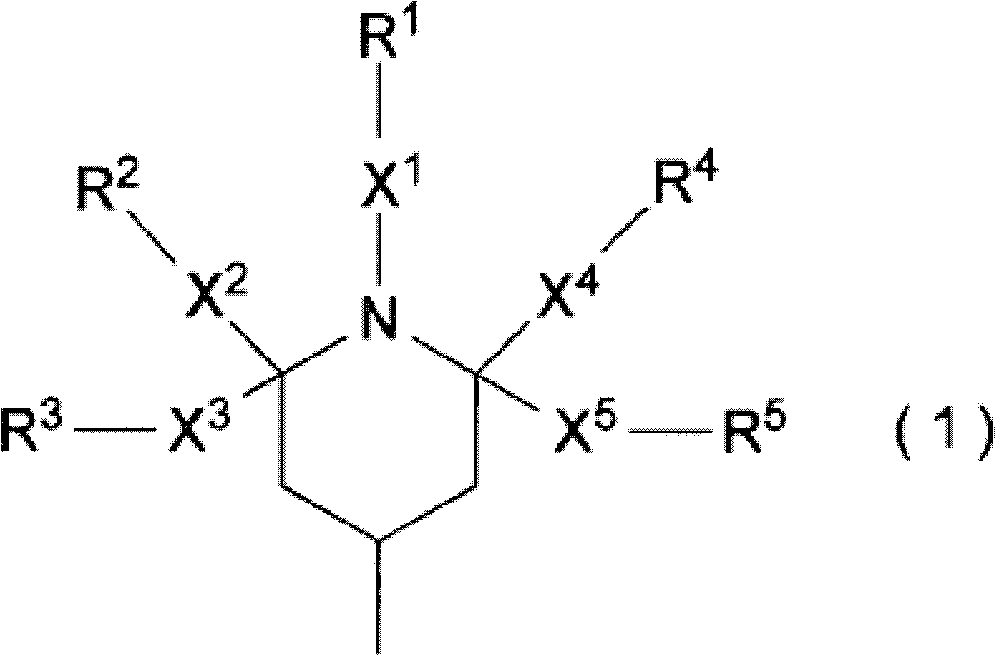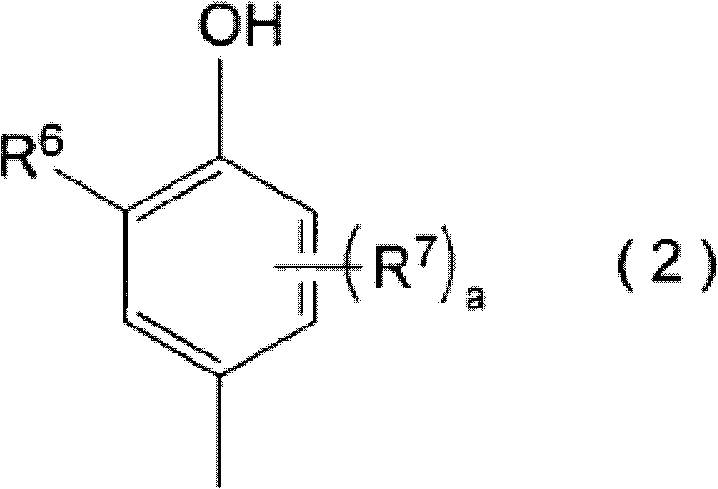Liquid crystal alignment agent, liquid crystal alignment film and liquid crystal display element
A technology of liquid crystal display elements and liquid crystal alignment agents, which is applied in the direction of liquid crystal materials, optics, instruments, etc., can solve the problems of reworkability (reduced peelability, etc.), and achieve the effect of excellent reworkability and good electrical properties
- Summary
- Abstract
- Description
- Claims
- Application Information
AI Technical Summary
Problems solved by technology
Method used
Image
Examples
example
[0167] Hereinafter, although this invention is demonstrated in full detail based on an example, this invention is not interpreted limitedly based on description of this example.
[0168]
Synthetic example 1
[0170] 22.4 g (0.1 mol) of 2,3,5-tricarboxycyclopentylacetic dianhydride (TCA) as tetracarboxylic dianhydride, and 2.6 g (0.02 mol) of p-phenylenediamine (PDA) as diamine , 10.4 g (0.02 mol) of 3,5-diaminobenzoic acid cholestyl ester (HCDA) and 9.1 g (0.06 mol) of 3,5-diaminobenzoic acid (DAB) were dissolved in N-methyl-2- The reaction was performed at 60 degreeC for 6 hours in 176 g of pyrrolidone (NMP), and the solution containing the polyamic acid of 10 mass % was obtained. The solution viscosity of the obtained polyamic acid solution was 102 mPa··s. Next, 410 g of NMP was added to the obtained polyamic-acid solution, and 7.9 g of pyridine and 10.2 g of acetic anhydride were added, and the dehydration ring-closure reaction was performed at 110 degreeC for 4 hours. After the dehydration ring-closing reaction, the solvent in the system was replaced with new NMP (the pyridine and acetic anhydride used in the dehydration ring-closing reaction were removed from the system), the...
Synthetic example 2
[0172] 22.3 g (0.1 mol) of TCA as tetracarboxylic dianhydride, 3.9 g (0.02 mol) of 4,4'-diaminodiphenylmethane (DDM) as diamine, 5.2 g (0.01 mol) of HCDA, Cholesteryloxy-2,4-diaminobenzene (HCODA) 4.9g (0.01 mole) and DAB9.1g (0.06 mole) were dissolved in NMP182g, and the reaction was carried out at 60°C for 6 hours to obtain 10 mass % polyamic acid solution. The solution viscosity of the obtained polyamic acid solution was 117 mPa··s. Next, 423 g of NMP was added to the obtained polyamic-acid solution, and 10.2 g of pyridine and 13.2 g of acetic anhydride were added, and the dehydration ring-closure reaction was performed at 110 degreeC for 4 hours. After the dehydration ring-closing reaction, the solvent in the system was replaced with new NMP to obtain a solution containing 15% by mass of a polyimide (A-2) having an imidation rate of about 67%. A small amount of the obtained polyimide solution was fractionated, and NMP was added to prepare a solution having a polyimide co...
PUM
| Property | Measurement | Unit |
|---|---|---|
| thickness | aaaaa | aaaaa |
Abstract
Description
Claims
Application Information
 Login to View More
Login to View More - R&D
- Intellectual Property
- Life Sciences
- Materials
- Tech Scout
- Unparalleled Data Quality
- Higher Quality Content
- 60% Fewer Hallucinations
Browse by: Latest US Patents, China's latest patents, Technical Efficacy Thesaurus, Application Domain, Technology Topic, Popular Technical Reports.
© 2025 PatSnap. All rights reserved.Legal|Privacy policy|Modern Slavery Act Transparency Statement|Sitemap|About US| Contact US: help@patsnap.com



